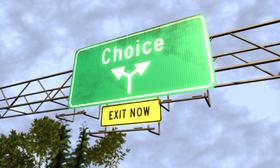- The mission of Hawai'i Community College is to provide the community with a responsive educational environment that empowers learners to develop skills and to be responsible and productive in a complex world.
School Highlights
Hawaii Community College serves 3,034 students (24% of students are full-time).
The college's student-teacher ratio of 12:1 is lower than the state community college average of 18:1.
Minority enrollment is 85% of the student body (majority Hispanic and Asian), which is less than the state average of 89%.
Quick Facts (2025-26)
- Enrollment: 3,034 students
- In-state tuition: $2,870
- Out-state tuition: $7,718
- Student-teacher ratio: 12:1
- Minority enrollment: 85%
- Source: Integrated Postsecondary Education Data System (IPEDS)
School Overview
The teacher population of 253 teachers has stayed relatively flat over five years.
Hawaii Community College
(HI) Community College Avg.
Carnegie Classification
Associate's Colleges: High Career & Technical-High Traditional
Associate's Colleges: High Transfer-High Nontraditional
Institution Level
At least 2 but less than 4 years
At least 2 but less than 4 years
Institution Control
Public
Public
Total Faculty
253 staff
269 staff
School Calendar
Student Body
The student population of Hawaii Community College has grown by 16% over five years.
The student-teacher ratio of 12:1 has increased from 10:1 over five years.
The Hawaii Community College diversity score of 0.76 is equal to the state average of 0.76. The school's diversity has stayed relatively flat over five years.
Total Enrollment
3,034 students
3,377 students
Student-Teacher Ratio
12:1
18:1
# Full-Time Students
742 students
695 students
# Part-Time Students
2,292 students
2,682 students
# Enrollment Undergraduate
303 students
379 students
# Full-Time Undergraduate Students
742 students
695 students
# Part-Time Undergraduate Students
2,292 students
2,292 students
Total Dormitory Capacity
40 students
40 students
% American Indian/Alaskan
n/a
n/a
% Asian
17%
32%
% Hispanic
17%
14%
% Black
1%
1%
% White
15%
11%
% Hawaiian
8%
6%
% Two or more races
39%
31%
% Non Resident races
2%
3%
% Unknown races
1%
2%
Diversity Score
0.76
0.76
College Completion Rate (Students who graduate in less than 4 years)
31%
28%
College Completion Rate (Students who graduate in 4 years or more than 4 years)
n/a
27%
Average Graduate Earnings (10 Years)
$31,300
$34,800
Tuition and Acceptance Rate
The public in-state tuition of $2,870 is more than the state average of $2,815. The in-state tuition has declined by 10% over four years.
The public out-state tuition of $7,718 is more than the state average of $7,663. The out-state tuition has declined by 7% over four years.
In-State Tuition Fees
$2,870
$2,815
Out-State Tuition Fees
$7,718
$7,663
Tuition Notes
$131 per credit for Hawaiʻi residents, $345 per credit for non-residents
% Students Receiving Some Financial Aid
76%
76%
Median Debt for Graduates
$9,969
$9,969
Median Debt for Dropouts
$5,250
$5,599
Source: 2024 (or latest year available) Integrated Postsecondary Education Data System (IPEDS) , School Administrators
School Notes
- The forerunner of the College was the Hawai'i Vocational School, established in 1941 by an act of the Territorial Legislature. Its prime responsibility was to provide vocational education for the youth of the island of Hawai'i. Trade programs offered when the school opened were Automotive Mechanics, Carpentry, Dressmaking, Machine Shop, and Sheet Metal & Welding. The period following World War II saw the growth of new programs designed to meet the expanding needs of business and industry. In 1947, a Diesel Mechanics program was started. Architectural Drafting began in 1951; Food Service in 1952; and Electricity in1955. In 1956, with the advancement in technology and the expansion of educational opportunities into broader fields of technical training; the institution was renamed the Hawai'i Technical School. New programs were added later, Business Education 1958, and the Automotive Body Repair & Painting, Electronics, and Practical Nursing programs in 1966. Hawai'i Community College offers over 30 Degree, Certificate, and Non-credit programs. Students can choose to begin a 4-year baccalaureate degree, and save 25-60% on in-state tuition costs by taking undergraduate liberal arts courses offered here. These general and pre-professional students may earn an Associate in Arts (A.A.) degree. Career and technical majors may earn an Associate in Science (A.S.) degree, an Associate in Applied Science (A.A.S.), an Associate in Technical Studies (A.T.S.), or a Certificate of Achievement (C.A.) in one of the 20 career and technical programs. Certificates of Completion (C.C.) are also available in Nurse's Aide, Residential Care Home Operator, Hotel Operations, Human Services and Food Services. A variety of non-credit programs, supported by the College, are offered through the Office of Continuing Education. Hawaii Community College is fully accredited by the Western Association of Schools and Colleges, Accrediting Commission for Community and Junior Colleges.
Frequently Asked Questions
How much does Hawaii Community College cost?
Hawaii Community College's tuition is approximately $2,870 for In-State students and $7,718 for Out-State students.
What schools are Hawaii Community College often compared to?
Hawaii Community Collegeis often viewed alongside schools like Honolulu Community College by visitors of our site.
Recent Articles

Community College Success Rates 2025: Outcomes & Trends
Updated 2025 analysis of community college success rates, completion, transfer, costs, enrollment, and strategies that shape student outcomes.

Community Colleges in 2025: Combating Stereotypes with Impact
Updated insights on how community colleges are dispelling myths, growing enrollment, and expanding pathways in 2025.

2025 FAFSA Changes Explained for Community College Students
A comprehensive guide to 2025 FAFSA changes, what community college students must know, new eligibility rules, timelines, and tips to maximize federal aid.









